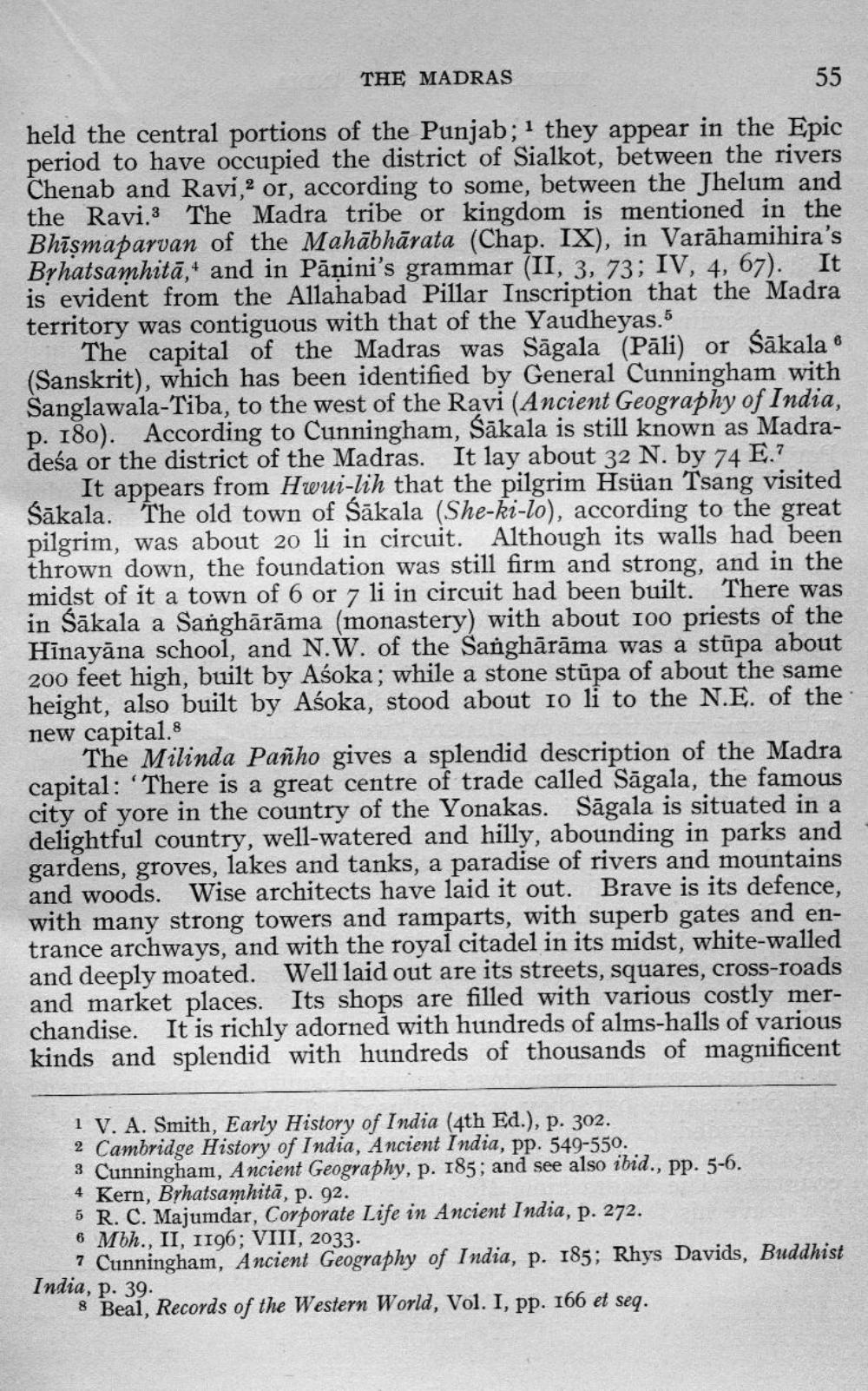________________
THE MADRAS
held the central portions of the Punjab; 1 they appear in the Epic period to have occupied the district of Sialkot, between the rivers Chenab and Ravi, or, according to some, between the Jhelum and the Ravi.3 The Madra tribe or kingdom is mentioned in the Bhīşmaparvan of the Mahābhārata (Chap. IX), in Varāhamihira's Brhatsamhitā,and in Pāņini's grammar (II, 3, 73; IV, 4, 67). It is evident from the Allahabad Pillar Inscription that the Madra territory was contiguous with that of the Yaudheyas.5
The capital of the Madras was Sāgala (Pāli) or Sakala (Sanskrit), which has been identified by General Cunningham with Sanglawala-Tiba, to the west of the Ravi (Ancient Geography of India, p. 180). According to Cunningham, Sākala is still known as Madradeśa or the district of the Madras. It lay about 32 N. by 74 E.?
It appears from Hwui-lih that the pilgrim Hsüan Tsang visited Sākala. The old town of Sākala (She-ki-lo), according to the great pilgrim, was about 20 li in circuit. Although its walls had been thrown down, the foundation was still firm and strong, and in the midst of it a town of 6 or 7 li in circuit had been built. There was in Sākala a Sanghārāma (monastery) with about 100 priests of the Hīnayāna school, and N.W. of the Sanghārāma was a stūpa about 200 feet high, built by Aśoka; while a stone stūpa of about the same height, also built by Asoka, stood about to li to the N.E. of the new capital.
The Milinda Pañho gives a splendid description of the Madra capital: There is a great centre of trade called Sāgala, the famous city of yore in the country of the Yonakas. Sāgala is situated in a delightful country, well-watered and hilly, abounding in parks and gardens, groves, lakes and tanks, a paradise of rivers and mountains and woods. Wise architects have laid it out. Brave is its defence, with many strong towers and ramparts, with superb gates and entrance archways, and with the royal citadel in its midst, white-walled and deeply moated. Well laid out are its streets, squares, cross-roads and market places. Its shops are filled with various costly merchandise. It is richly adorned with hundreds of alms-halls of various kinds and splendid with hundreds of thousands of magnificent
1 V. A. Smith, Early History of India (4th Ed.), p. 302. 2 Cambridge History of India, Ancient India, pp. 549-550. 3 Cunningham, Ancient Geography, p. 185; and see also ibid., pp. 5-6. 4 Kern, Byhatsamhitā, p. 92. 5 R. C. Majumdar, Corporate Life in Ancient India, p. 272. 6 Mbh., II, 1196; VIII, 2033.
7 Cunningham, Ancient Geography of India, p. 185; Rhys Davids, Buddhist India, p. 39.
8 Beal, Records of the Western World, Vol. I, pp. 166 et seq.




